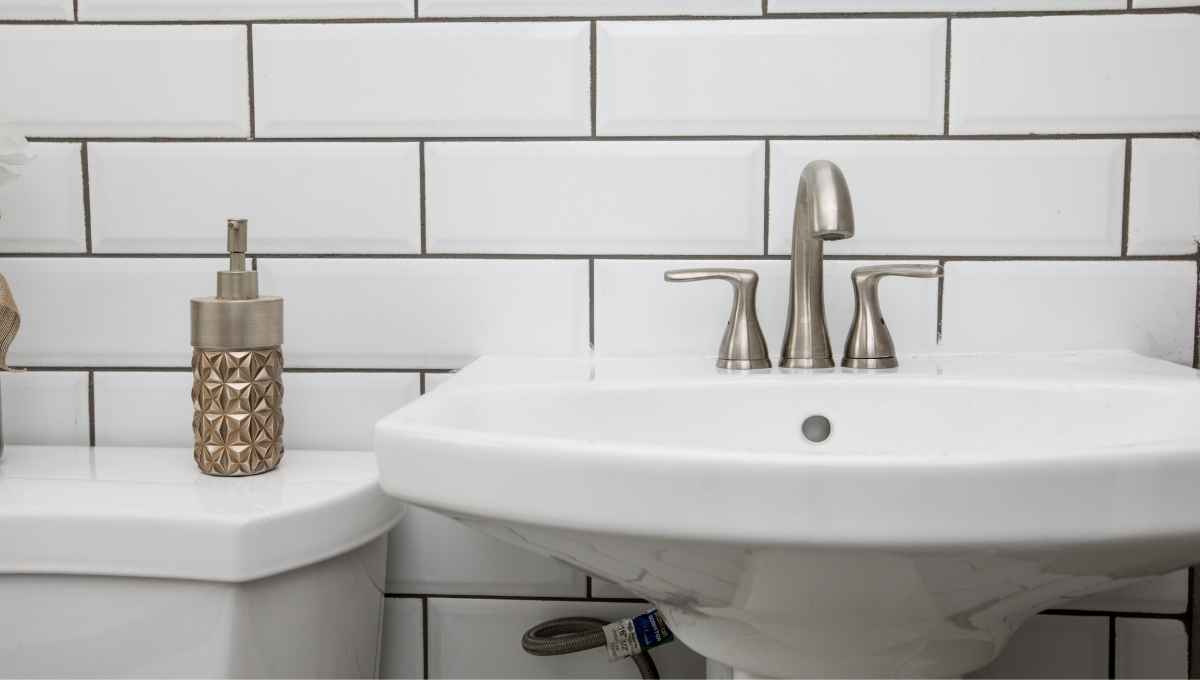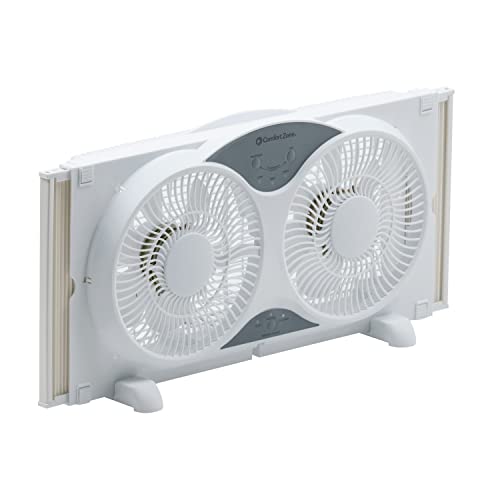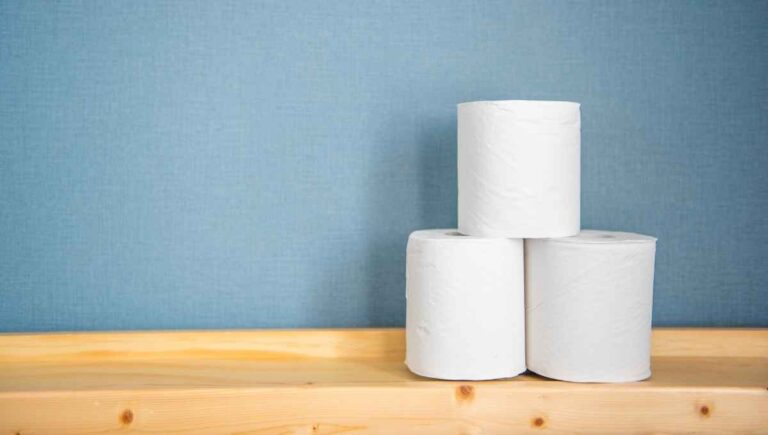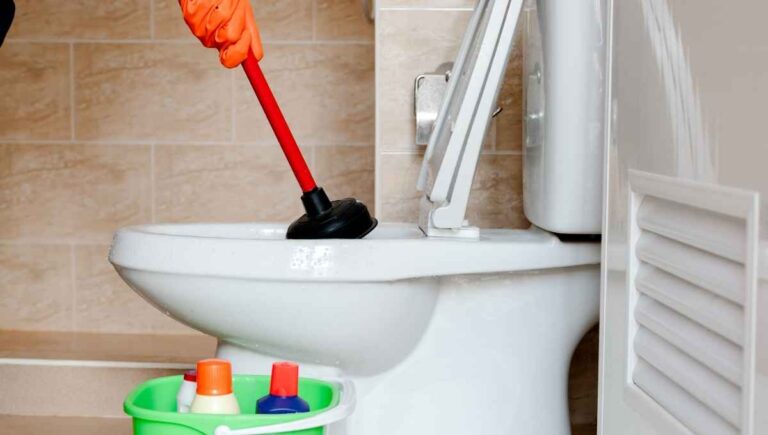Does a Bathroom Sink Need a Vent? (Plumbers Give Advice)

For many homeowners, there are a lot of myths and misconceptions about whether or not bathroom sinks need vents. The idea of a vent for a bathroom sink seems unnecessary and even inconvenient. However, the truth is that vents are actually an important part of a sink’s plumbing.
Every bathroom sink is required to have a vent. The vent for a bathroom sink is contained within the bathroom’s plumbing and helps to equalize pressure in the pipes. Bathroom sink vents also work to disperse toxic vapors from the sewage out of a pipe through the house’s ventilation.
However, there are times when a plumbing vent becomes clogged or damaged. You will need to know the signs of an issue with the bathroom sink vent or the absence of one.
You will also need to know what to do if there is an issue. Thankfully, we’ve got the answers in this article.
This post contains affiliate links. This means Household Blogger may earn a commission should you make a purchase using any of our links. Please refer to our full affiliate disclosure policy for full details.
Here’s a Quick Pro Tip!
Here are some bathroom products to help get you started on your next renovation project, so no matter how big the project is, you’ll be ready:
1. U.S. Standard Bathroom Sink Stopper – This sink stopper fits most American sink drains. It collects any hair to keep the drain unclogged. It also saves rings and other small items from falling down the drain.
2. Studor Mini-Vent Air Valve with ABS Adapter -This air valve with ABS adapter is easy to install vertically on an S trap or for a vent stack. It has the capacity for 160 drain fixture units (DFUs).
3. TUUBER Valve Trap Assembly Kit – This is an easy-to-install valve and vent system to keep water in the drain trap. This keeps odors and sewage gasses out of the house. You can use it in a kitchen or bathroom.
Bathroom Ventilation
You think about ventilation in the kitchen and even in the bathroom, but many don’t consider plumbing vents.
However, the pipes for the sink, tub, toilet, and anything with a drain need ventilation.
Does a Sink Have to Have an Air Vent?
Every sink has to have a vent in the plumbing system. This vent takes the toxic air from the sewage outside the house through a pipe running out of the roof. There should be a vent either connecting all of the drains or separate vents for each drain.
If all of the drains are connected and use one vent, this is called a stacked vent.
Whether the vents are stacked or individual to each drain, they are all vented out of a top stack that runs out of the roof.
Most are made of iron ore, but some are out of PVC pipe.
How Do You Vent a Bathroom Sink?
You can vent a bathroom sink and the rest of the house’s drains and form a vent stack. You can also vent the sink separately. The main thing is that the vent has a place to let the air and gasses out.
If you live in a place where the temperatures are below freezing at times, be sure the pipes are heavily insulated.
The plumbing vents can freeze shut and cause issues otherwise. Of course, plumbing vents can also become clogged for other things, but freezing is the most common issue.
Where is the Vent Pipe for the Bathroom Sink?
The vent pipe for the bathroom sink is located at the vent. The vent and vent pipe can be located in a stack, which vents out more than one drain. Or, if the sink has an individual vent, the vent pipe is located behind the S trap.
The vent pipe must be vertical. If it is placed horizontally, it will not work. To replace or add a vent or vent pipe, you will need to disassemble the S pipe.
It’s also a good idea to use this time to clean the pipes.
How Far Can a Bathroom Sink be From a Vent?
The maximum length a sink can be from its plumbing vent is 3 ½ feet. If the waste pipe diameter is only ½ inch, then the distance of the sink to the plumbing vent should only be 2 ½ feet. However, there can be a total of eight feet of vertical distance.
The eight feet of vertical distance in a combination drain is between the vertical combination drain and the vent system. The distance can be greater if the size of the trap is larger.
For example, for drain traps that are four inches in size, then the distance from the vent can be 16 feet at a ⅛-inch slope.
You might also enjoy our post on Do Bathtubs Need a Vent?
Plumbing and Ventilation
Proper plumbing and ventilation are one of the most important aspects of your home. If it’s not done right, you have serious issues.
Let’s dig into what can happen and how to prevent it!
What Happens if Plumbing is Not Vented?
If plumbing is not vented, gasses from the sewage will come up from the drainage pipes and into the house. Sewer gas can contain toxic gasses, including ammonium, carbon monoxide, and hydrogen sulfide.
If your sink or toilet gurgles or drains slow, this could also be a sign something is wrong with the vent.
If the weather is below freezing, the issue could be a frozen vent or vent pipe. To remedy this, pour hot water down the drains.
What Happens if You Don’t Vent a Sink?
If your sink does not have a vent in its plumbing and is not connected to a central vent system, sewage gasses will build up and enter your home. These gasses include carbon monoxide, hydrogen sulfide, and ammonium.
If you have a central wet vent system or a stack vent system, you just need to make sure the sink is connected.
If you don’t, you will need to place a vent for it right behind the S pipe under the sink.
How Do You Vent a Bathroom with No Outside Access?
To vent a bathroom with no outside access, you may need to resort to a bathroom fan. They’re easy to install, but they will only help with evaporation and disbursement of moisture and gasses unless there’s an outlet.
Your drains also should have ventilation, and they need outside access. Otherwise, toxic gasses from sewage pipes will seep in through the sink, toilet, and bath drains.
A clogged or frozen vent will also cause issues.
How Far Can You Run a Drain Without a Vent?
Depending on the trap size pipe and the type of plumbing ventilation system, you can run a drain up to 16 feet at a ⅛ slope or eight feet vertically. In a wet venting system, a drain can run at a slope.
A stack vent system or an individual vent system can be 2 ½ to 3 ½ inches horizontal and up to eight feet vertically.
In a wet vent system, you can run a drain 16 feet at a ⅛ slope if the trap is four inches in size. If it’s only 1 ¼ in size, the drain pipe can only reach five feet at a ¼-inch slope.
Does Every Bathroom Drain Need a Vent?
Every bathroom drain needs a vent, but they can share a vent in a wet vent or stacking system. If you don’t have a vent for the drains, gasses from the sewage will build up in the pipes and seep into the house.
You can also put a vent next to the S pipe at each drain. This vent and vent pipe must be vertical. Also, if you notice any gurgling sounds or slow draining pipes, check the vents.
If it’s freezing outside, they could have ice buildup. If it’s not, it could be clogged.
Where Does a Bathroom Exhaust Fan Vent to?
Some bathroom exhaust fans vent outside of the house near the window. However, many houses have a duct system that takes the moisture through the system and outside, either through a wall or the roof.
It is not advised, and often against code, to run the ducts into the attic or crawl space. These spaces are often too closed in, and mold can start to grow if too much moisture is built up in them.
What is The Code for Bathroom Ventilation?
Most places have a building code that requires any bathroom with a tub or shower to be ventilated with a fan that is connected to the outside. However, a bathroom with a window does not need additional ventilation in some states.
If you have an air vent in the bathroom that connects the room to the outside, a bathroom fan might not be necessary either.
However, if you do not have a fan, be sure to have your AC on or window open to draw out the moisture during and after a bath or shower.
Can a Dryer Vent be Used For a Bathroom Vent?
You should not use a dryer vent for a bathroom vent. Even though a bathroom vent and a dryer vent remove moisture, using a dryer vent in a bathroom is against building codes and poses a fire risk. So instead, it’s best to use a regular bathroom vent or open a window.
You can also purchase a dehumidifier. They come in all sizes, and most are portable. Also, if you have a vent but not a fan, be sure the AC is on, or the window is open.
Unfortunately, however, opening a window will not be as helpful if it is humid outside.
Exhaust Fans
Exhaust fans help draw out the moisture in a bathroom into the outside air. If you have a vent or a window in the bathroom, this will make it possible for the fan to move the moisture out.
How Does a Ductless Bathroom Vent Work?
A ductless bathroom vent circulates the air through a filter and usually charcoal. It can remove odors from a bathroom, but they are less effective at drawing out moisture. A ductless vent is best for bathrooms without a shower or tub.
Run a dehumidifier if you don’t have a vent connected to a duct system in a bathroom with a shower or tub. Moisture can cause a lot of problems if it is not removed properly.
Moisture can lead to mold, mildew, and built-up scum.
How Does a Ventless Bathroom Fan Work?
A ventless bathroom fan works by only circulating the air. If the air is full of moisture, it will take a long time to disperse the moist air out of the bathroom. A ventless bathroom is also against many building codes.
If a drain is ventless, this will lead to many bad things, including the build-up of toxic sewage gasses.
These gasses include carbon monoxide, ammonium, and hydrogen sulfide. In addition, it will cause a bad odor in your home.
Is There a Bathroom Fan That Doesn’t Vent Outside?
You can buy a fan and a vent made for bathrooms that do not vent outside, but these fans only circulate the air and some filter the air to get rid of odors. It will not help draw out the moisture in the bathroom.
Fans that do not vent outside are great for powder rooms or bathrooms that do not have a shower or tub.
However, many house building codes require a bathroom with a tub or shower to have an outside vent.
Does a Bathroom Need an Exhaust Fan?
A bathroom does not need an exhaust fan, but they are helpful. A bathroom mostly needs a vent that will circulate the air from the outside to the inside and from the bathroom to the outside.
Exhaust fans help speed up the process of pulling out moisture and smell in the bathroom. They are especially helpful in bathrooms with showers and bathtubs.
If you don’t have an exhaust fan, they are simple to install in an outside window.
Can I Vent the Bathroom Fan into the Plumbing Vent?
You cannot use a bathroom fan in a plumbing vent. The plumbing vent is set in the vent pipe and vents out toxic and flammable gasses from the sewage. If you hook up an electrical part to the vent, it could start a gas and electrical fire.
If smells are coming from your drain, try pouring hot water down it. You can also pour vinegar down the drain, wait 20 minutes, and then pour hot water down the drain.
This helps to flush out any clogs or smelly build-up.
Where Does a Bathroom Exhaust Fan Vent to?
Most bathroom exhaust fans vent outside through the roof, but some vent through the floor to a crawl space. In addition, some bathrooms, mostly those added after an initial build, have vents that run outside through a wall or window.
A plumbing vent doesn’t have a fan, but it typically vents through the roof.
The vent can even be eight feet away from the plumbing trap if it’s vertical, and if the vent system is wet, it can be 16 feet away at a ⅛-inch slope.
Is it OK to Vent the Bathroom Fan into the Soffit?
You can vent a bathroom fan through a soffit. This option is beneficial when you have an older roof. You don’t risk creating a roof leak when you vent through the soffit because you are not putting a hole through the roof.
Venting a bathroom fan into a soffit also helps retain heat in the cooler months. After a bath or shower, the air moves up horizontally.
Therefore, part of the air will stay in the vent, which keeps in the warm air and blocks out the cool air.
You might also enjoy our post on Does a Bathroom Sink Need a Stopper?
Related Questions
How Do You Stop Mold in a Bathroom Without a Fan?
You can stop mold from growing in the bathroom without a fan if you have an air vent or a window. During and after a bath or shower, turn up the AC fan power or open the window.
If you do not have either, You can buy a portable bathroom fan, vent, and a dehumidifier. The fan and vent will pull out the odor, and the dehumidifier will pull out the moisture.
You will need to change filters and empty water from the dehumidifier regularly.
What is a Plumbing Cheater Vent?
A plumber cheater vent is a vent that allows air to enter the pipes but uses suction to keep sewage gasses from coming out of the drain. You can install a plumber cheater vent inside the house without venting to the outside.
Cheater vents are often hooked up right behind the S pipe, but you might find one in an attic or crawl space.
Cheater vents are helpful for additions and kitchen islands since there is no wall to hide the plumbing pipes.
Why are Vents Required in the Waste System?
Vents and vent pipes are necessary for a waste system because of the vacuum and suction it creates to keep water in the drain trap. If water doesn’t stay in the trap, sewage gasses can come through the pipe.
Most drains are vented out of a stack vent and vent out of the roof, but some vents are placed behind the S pipe.
Houses with additional bathrooms or kitchen islands most likely have a vent for each drain.
How Far Can You Run a Drain Without a Vent?
If the trap is four inches in size and has a wet vent system, you can run a drain 16 feet at a ⅛-inch slope. Vertically, you can run the drain eight feet, and horizontally, you can run a drain 2 ½ to 3 ½ feet, depending on the size of the trap.
The vent is what creates a vacuum and a suction for the trap to keep water in the trap. The trapped water keeps out harmful sewage gasses like ammonium, carbon monoxide, and hydrogen sulfide.
Final Thoughts
I hope you have not just found out everything about your plumbing is against code.
Instead, I hope you don’t have to make any changes to what’s been done but that you learned some new ways to make your bathroom sink less stinky.











